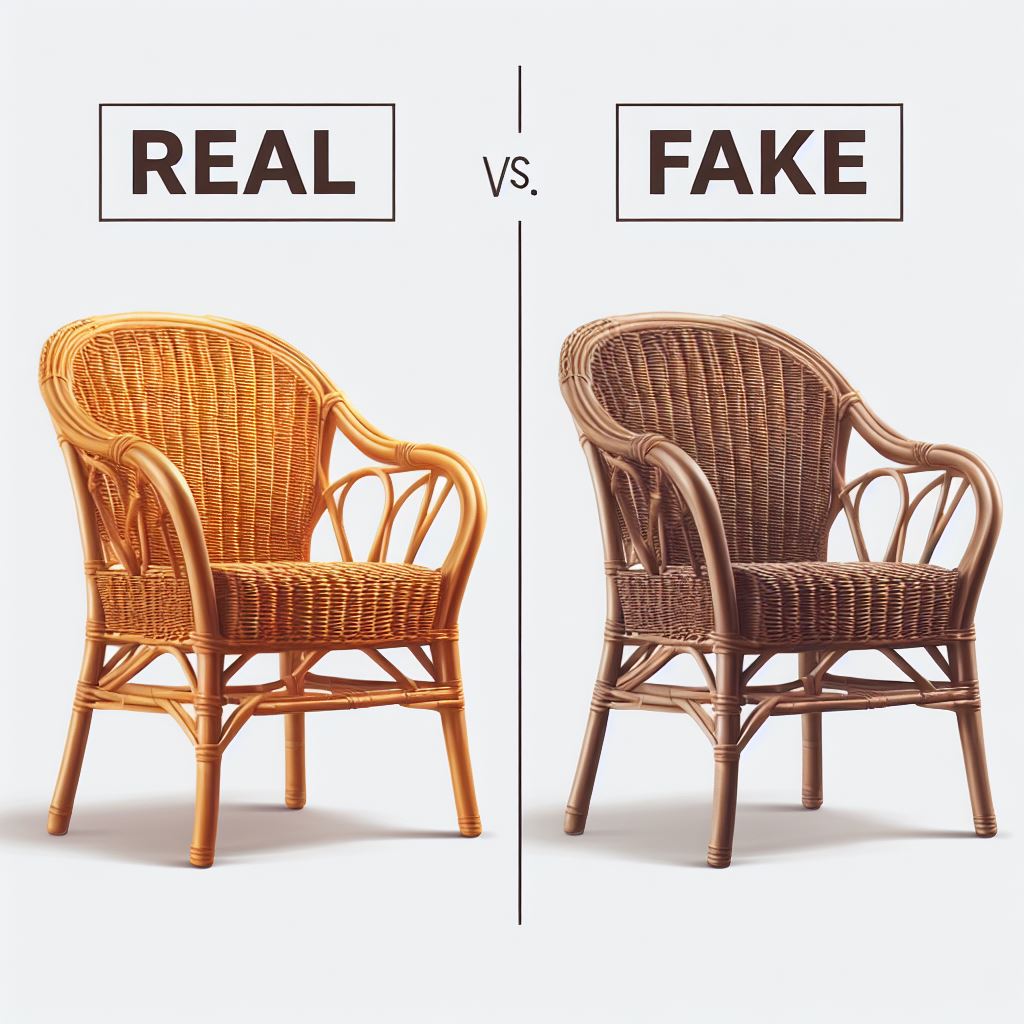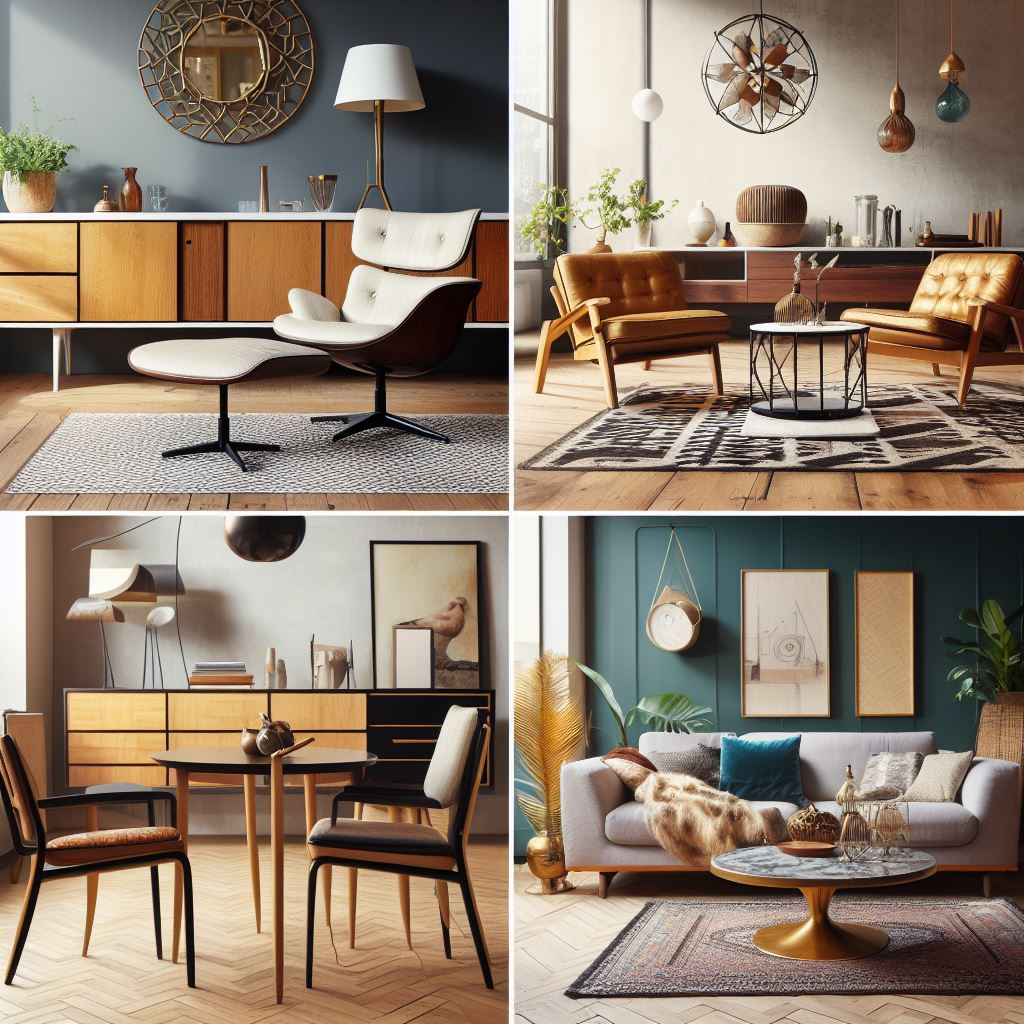🤍 Unmatched Quality, Authentic Craftsmanship
🤍 Unmatched Quality, Authentic Craftsmanship
🤍 Unmatched Quality, Authentic Craftsmanship
Are you a fan of mid-century modern furniture and want to make sure you're buying the real deal?
With its timeless design and quality craftsmanship, authentic mid-century modern furniture is highly sought-after.

But how can you tell if mid-century modern furniture is real?
Knowing how to identify authentic mid-century furniture is essential for any collector or enthusiast.
From examining the materials and construction to understanding the design elements and signatures of renowned designers, this guide will provide you with the knowledge and tools needed to spot the real thing.
Whether you're shopping for a specific piece or simply want to learn more about mid-century modern furniture, this comprehensive guide will help you navigate the market with confidence and ensure that you're investing in high-quality pieces.
So, if you're ready to become an expert in authenticating mid-century modern furniture, keep reading!

In order to effectively identify and authenticate mid-century modern furniture, it is important to first have a basic understanding of the design movement.
Mid-Century Modern Furniture is a design movement that began in the 20th century between the 1940s and 1950s and was a departure from the ornate, traditional styles of pre-war furniture.
The minimalist philosophy behind Mid-Century Modern is often credited to Ludwig Mies van der Rohe’s famous statement, “Less is more.”
It is characterized by its emphasis on clean lines, organic shapes, and modern materials such as wood, leather, and metal.
Furthermore, mid-century modern furniture is often characterized by its functionality and practicality, as well as its attention to detail.
Some of the most iconic mid-century modern furniture was designed by renowned designers like Charles Eames and Ray Eames, George Nelson, Hans Wegner, Isamu Noguchi, Florence Knoll, and Arne Jacobsen.
These designers created timeless original pieces that have become synonymous with mid-century modern design style.
In addition to these renowned designers, there are also a number of mid-century modern furniture brands that have become well-known in the industry, such as Herman Miller, Knoll, Drexel, and Brown Jordan.
Authentic mid-century modern furniture is highly valued and sought-after by many collectors and enthusiasts.
Not only does it offer a timeless design that stands the test of time, but these vintage pieces are also made with quality materials and craftsmanship, ensuring that they will last for generations to come.
The importance of investing in authentic mid-century modern furniture lies not only in its aesthetic beauty but also in its inherent value.
Now that you have a better understanding of mid-century modern furniture, its history, and characteristics, let's discuss the construction and materials that are used in mid-century modern furniture, which will help you examine whether it is real or not.

When it comes to authenticating mid-century modern furniture, one of the most important elements to consider is the quality of the materials, construction techniques, and some unique elements that are used in the piece.
When examining a beautiful piece of mid-century modern furniture, it is essential to look closely at the quality of the materials used.
Authentic mid-century modern furniture is typically made with high-quality materials such as solid wood, leather, metal, and glass.
Quality joinery, such as dovetail joints on drawers, further indicates authenticity.
Additionally, authentic pieces often feature sleek lines and a minimalist aesthetic.
Inspecting the materials used in the piece is a great way to ensure that it is an authentic mid-century modern piece.
Construction techniques and joinery used in authentic mid-century modern furniture are hallmarks of the design movement.
Quality craftsmanship is essential for an authentic piece to be accurately identified, and careful examination should be done to ensure that it is made with quality materials and construction techniques.
Common joinery methods used in authentic pieces include dovetailed joints, mortise-and-tenon joints, and dowels.
Authentic mid-century modern furniture is characterized by its original design elements and features that set it apart from other styles of furniture.
These features often include sleek, minimalist lines, classic shapes, and honest materials such as wood, leather, and metal.
Popular designers and brands of mid-century look furniture also have signature design elements that are specific to their work.
For example, designer George Nelson was known for his use of bent wood, metal, and tubular steel frames.
Knowing these unique elements can help authenticate a piece of mid-century modern furniture.
Next, let us help you with the research and what to look for when identifying authenticity.
When researching mid-century modern furniture, it is important to research the history and background, identify manufacturer marks, consult experts, and compare with reference materials.
Let's discuss these further.
Researching the history and background of specific pieces or designers is an important part of authenticating mid-century modern furniture.
The history of a piece can provide valuable context, such as the maker, designer, country of origin, and time period during which it was made.
Researching the background of a piece can also shed light on its authenticity and value.

Another way to identify an authentic mid-century modern piece is by looking for manufacturer marks, labels, or signatures.
Many mid-century modern pieces have a mark that identifies the maker of the piece.
This can be something as simple as a stamp or label on the bottom of a piece—sometimes it’s even inscribed into the wood.
Consulting experts or professionals in mid-century modern furniture is another way to identify an authentic piece.
Experts and professionals in the field have extensive knowledge of different makers, designers, materials, and techniques used to create authentic pieces.
Consulting with a professional can help determine the manufacturer, designer, and age of a piece, as well as its overall authenticity.
Additionally, they can assess any repairs or wear that may indicate a piece is not authentic.
Comparing it with reference materials and catalogs is another way to authenticate mid-century modern furniture.
Reference materials and catalogs can provide information on the maker, designer, material, and construction techniques used in a specific piece.
Additionally, these resources can provide valuable insight into how a piece compares to other pieces of similar design from the same time period.
Comparing an item with reference materials or catalogs can help identify unique features or elements that indicate authenticity.
Now that you have a better understanding of how to identify and authenticate mid-century modern furniture, let's assess the condition and age of real mid-century modern furniture.
In addition to researching and identifying authenticity, assessing the condition and age of a piece is an important factor when determining whether or not it is an authentic mid-century modern piece.
The best way to assess condition and age is to check for any signs of wear and repairs, identify original upholstery, and understand the market value of the pieces.
Signs of wear, patina, or aging that indicate authenticity are important indicators when determining the authenticity of a mid-century modern piece.
Patina is the term used to describe the color and texture changes that occur in natural materials, such as wood, over time.
These changes can often indicate a piece is authentic, as they are unique to each individual piece.
Signs of wear, such as dings or scratches, can also indicate a piece is authentic.
Identifying original upholstery, finishes, and hardware is another way to authenticate a mid-century modern piece.
Original upholstery, finishes, and hardware can often indicate the age of the piece as well as its authenticity.
Upholstery fabric from this time period was often made of natural materials such as wool, linen, and cotton and in bold colors.
This fabric can often be identified by its soft feel and natural fibers. Finishes, such as lacquer or varnish, were often used on wood to give it a glossy finish and are another way to identify the age of a piece.
Finally, hardware from this time period was often made of brass or steel and can help indicate the authenticity of a piece.
Understanding the market value and rarity of specific pieces is another factor to consider when authenticating mid-century modern furniture.
The market value of a piece can often indicate its overall authenticity, as certain makers, designers, or styles may command higher prices than others.
Additionally, certain pieces may be rarer than others, which can also indicate their authenticity.
It is important to research the market value and rarity of similar pieces in order to determine the authenticity of a piece.
Let's have a look at some other alternatives to midcentury modern-style furniture in the next section.

Modern alternatives to mid-century modern furniture can be a great way to add a unique touch to any contemporary home.
Many designers have taken inspiration from classic mid-century designs and created new furniture pieces that maintain the alluring aesthetic while being more cost-effective and easier to find.
Good mid-century style reproductions offer an affordable way to add a touch of classic style and sophistication to any home.
While some may be hesitant to purchase a reproduction, these pieces can often be indistinguishable from the real thing.
Reproductions can also offer modern convenience in terms of functions or materials, such as adding adjustable legs or using more durable materials.
Furthermore, these pieces may often be easier to find and cheaper than their original counterparts.
When looking for quality mid-century furniture, it is important to look for pieces that are well made and have a timeless design.
Look for pieces that are made from high-quality materials, such as solid wood or sturdy metals, as these materials will be more durable and last longer.
Also, look for furniture that has a classic mid-century design, such as tapered legs and gentle curves.
Finally, pay attention to the details of the piece. Quality furniture should have clean lines and a smooth finish.
Mid-century modern furniture is known for its sleek lines, simple design, and timeless appeal.
However, many of the materials used during this period are not as eco-friendly as they should be.
Fortunately, there are a number of modern, eco-friendly alternatives available that still retain the classic mid-century aesthetic.
Let’s uncover some of the most frequently asked questions to clear your doubts, if any.
After reading the information provided above, you may still have some lingering questions about identifying real mid-century modern furniture.
In this section, we will provide answers to some frequently asked questions about this topic.
Some of the most popular mid - century look furniture designers and brands include Eames, Knoll, Herman Miller, George Nelson, Hans Wegner, and Charles and Ray Eames.
These designers are known for their timeless designs that combine functionality with popular style.
Other brands to consider include Arne Jacobsen, Florence Knoll Bassett, Finn Juhl, Warren Platner, and Vladimir Kagan.
Yes, there are certain markings and labels that can help identify a piece as being from the mid-century modern period.
Many original mid-century pieces are labeled with the designer’s name, manufacturer, and year of production.
Additionally, some pieces may have unique symbols or initials that were used to identify the maker or designer.
Mid-century modern furniture was characterized by its use of organic materials and natural forms.
Popular materials used in mid-century modern furniture included wood, metal, plastic, leather, and upholstery.
Wood was a popular choice for frames and accents such as legs and arms, while metal was often used for structural support.
Plastic and leather were often used for upholstery, while fabrics such as tweed and velvet were used for cushions.
Yes, high-quality reproductions can be a suitable alternative to authentic mid-century modern furniture when it comes to materials and craftsmanship.
Reproductions are often made with the same attention to detail as authentic pieces and use similar-quality materials.
However, it is important to research and compare before making a purchase to ensure that you get the highest-quality piece of furniture possible.
Additionally, some reproduction pieces may not be as durable or long-lasting as authentic pieces.
Identifying real mid-century modern furniture can be a challenging task, but by understanding the key characteristics, doing thorough research on designers and brands, examining markings and labels, and analyzing the materials used, you can increase your chances of determining its authenticity.
It is also advisable to consult with experts or professionals in the field for authentication purposes.
Remember that the mid-century modern era spanned from the 1940s to the 1960s, and genuine pieces from this era are highly sought after.
However, high-quality mid-century style furniture can serve as a worthy alternative, provided it is meticulously crafted to capture the essence of the era's design and craftsmanship.
With careful examination and knowledge, you can confidently identify real mid-century modern furniture and add authentic pieces to your collection.


